 |
|
21 - 25 August 2011
San Diego Convention Center
San Diego, California United States |
SPIE Optics and Photonics
 |
|
21 - 25 August 2011
San Diego Convention Center
San Diego, California United States |
Del Mar Photonics Products updates
Ne-like Ti x-ray laser driven by a single femtosecond laser
Paper 8140-37 of Conference 8140
Date: Wednesday, 24 August 2011
Author(s): Yingjun Li, China Univ. of Mining and Technology (China); Aiping
Teng, Yanqian Sun, China Univ. of Mining and Technology (United States)
Based on the similarity method, the scale laws for electron temperature,
electron density and scale length of the Ne-like Ti slab plasma are presented
under the condition of a femtosecond laser pulse with various front edges. The
results show it is feasible for a single femtosecond laser pulse to drive
Ne-like Ti X-ray laser. Furthermore, the results shown that the femtosecond
laser with a gentle front edge is beneficial to drive X-ray laser. This work
provides a new scheme to drive X-ray lasers with only one femtosecond laser.
Localization of laser pulse and slow-light propagation in nonlinear photonic
crystal
Paper 8120-5 of Conference 8120
Date: Sunday, 21 August 2011
Author(s): Vyacheslav A. Trofimov, Lomonosov Moscow State Univ. (Russian
Federation); Sheng Lan, South China Normal Univ. (China)
We investigate laser pulse propagation in 2D nonlinear photonic crystal or in 1D
layered nonlinear structure at the conditions of soliton formation in nonlinear
elements of the photonic crystal. The formation of soliton depends on input
light intensity, duration of pulse and shape of elements from which the photonic
crystal consists. In 2D case the soliton formation depends on focusing of laser
beam and on presence of laser energy in neighbouring elements of the photonic
crystal. These solitons move with slow velocity inside the elements of the
photonic crystal. Under certain conditions the soliton can stop. This phenomenon
can be used for data storage. The similar solitons can appear in many elements
of photonic crystal.
Interaction of coherent laser filaments in air
Paper 8130-8 of Conference 8130
Date: Sunday, 21 August 2011
Author(s): Alexander A. Dergachev, Svyatoslav A. Shlenov, Lomonosov Moscow State
Univ. (Russian Federation)
Interaction between two coherent laser pulses in crossed beams in the regime of
filamentation was investigated numerically. We studied peak intensity, fluence,
and pulse induced plasma concentration behavior for different configurations of
beams and phase shifts between the pulses. It was shown that fluence
distribution is determined to a considerable extent by interference pattern in
the area where two pulses overlap. We have found a specific propagation regime
when formation of a single lengthy filament along optical axis can be changed to
absence of filament nucleation and rapid drop in intensity and fluence after
overlapping area. This regime can be controlled by the phase shift between two
pulses.
Spatial beam shaping for lowering the threshold energy for femtosecond laser
pulse photodisruption
Paper 8130-37 of Conference 8130
Date: Monday, 22 August 2011
Author(s): Anja Hansen, Tammo Ripken, Alexander Heisterkamp, Laser Zentrum
Hannover e.V. (Germany)
High precision femtosecond laser surgery is achieved by focusing femtosecond
(fs) laser pulses in transparent tissues to create an optical breakdown and
therefore a tissue dissection through photodisruption. For moving applications
in ophthalmology from corneal or lental applications in the anterior eye to
vitreal or retinal surgery in the posterior eye the applied pulse energy needs
to be minimized in order to not harm the retina. However, the aberrations of the
anterior eye elements cause a distortion of the wave front and consequently an
increase in size of the irradiated area and a decrease in photon density in the
focal volume. Therefore, higher pulse energy is required to still surpass the
threshold irradiance. In this work, aberrations in an eye model consisting of a
planoconvex lens for focusing and HEMA (2-hydroxyethyl-methacrylate) in a water
cuvette as eye tissue were corrected with a deformable mirror in combination
with a Hartmann-Shack-sensor. The influence of an adaptive optics aberration
correction on the pulse energy required for photodisruption was investigated. A
reduction of the threshold energy was shown in the aberration-corrected case and
the spatial confinement raises the irradiance at constant pulse energy. As less
energy is required for photodisruption when correcting for wave front
aberrations the potential risk of peripheral damage is reduced, especially for
the retina during laser surgery in the posterior eye segment. This offers new
possibilities for high precision fs-laser surgery in the treatment of several
vitreal and retinal pathologies.
Femtosecond laser structured surfaces for opto-fluidics and sensing
Paper 8097-22 of Conference 8097
Date: Monday, 22 August 2011
Author(s): Ricardas Buividas, Daniel J. Day, Saulius Juodkazis, Swinburne Univ.
of Technology (Australia)
Surface patterning by ripples, the self-organized quasi-periodic sub-wavelength
relief structures, is demonstrated on large areas with sub-millimeter cross
section using femtosecond laser pulses. We choose high refractive index
materials such as Si, TiO2, GaP, GaAs, Al2O3 ITO for creating patterns where the
width of a groove/ridge is between 100 - 200 nm. Such patterns are prospective
for surface enhanced Raman shattering (SERS) after coating them by plasmonic
metals. Such directly written SERS sensors do not require multi-processing
lithographic fabrication steps which are not practical or expensive for the
large sub-1mm regions. The complex sub-wavelength roughening of the surface by
ripples is found to change wetting conditions as revealed by video monitoring
water droplet put in touch with the rippled regions. Application potential of
ripples in applications of electrowetting on ITO substrates is discussed.
Photonic microdevice fabrication with femtosecond fiber laser
Paper 8164-10 of Conference 8164
Date: Monday, 22 August 2011
Author(s): Huan Huang, Lih-Mei Yang, Jian Liu, PolarOnyx, Inc. (United States)
Femtosecond fiber laser direct writing fabrication, investigated in this paper
is capable of producing optical waveguide devices inside bulk transparent
materials without the need for lithography, etching and a controlled
environment, and hence offers remarkable technological flexibility. Using the
femtosecond direct writing process, we have manufactured various waveguides with
different laser writing parameters and the waveguides properties have been
scrutinized. This femtosecond fiber laser based process is inherently simple,
direct and reasonably inexpensive. By using this tool, we can manufacture
glass-based micro-devices incorporating micro-optics with microfluidic networks
for photonic and biochemical applications.
Femtosecond laser structuring of waveguides for sensing applications
Paper 8097-25 of Conference 8097
Date: Monday, 22 August 2011
Author(s): Daniel J. Day, Ricardas Buividas, Gediminas Gervinskas, Saulius
Juodkazis, Swinburne Univ. of Technology (Australia); Mindaugas Mikutis, Gintas
Slekys, ALTECHNA Co. Ltd. (Lithuania)
Tightly focused femtosecond laser pulses were used to open cavities and
drill-throughout holes in the optical single and multi-mode fibers. The cross
section of the holes and cavities ranging from 10 to 50 micrometers. This direct
laser writing approach makes it possible to minimize the amount of waveguide
material which should be removed for uncompromised mechanical performance. The
proof-of-the-principle demonstration of incorporating fibers into a microfluidic
chip is demonstrated. We show that fabricated open cavities and holes in the
waveguides can be used for direct monitoring of absorption changes. Simple
design and integration possibility of laser-fabricated waveguide sensors is
prospective for optofluidic applications.
Study on propagation of femtosecond laser pulses in photonic crystal fiber and
micro/nanofiber loop
Paper 8120-32 of Conference 8120
Date: Monday, 22 August 2011
Author(s): Lei Zhang, Carestream Co. (China); Guoying Feng, Sichuan Univ.
(China)
Supercontinuum generation (SCG) using a femtosecond Ti:Sapphire laser as a pump
source and fiber( or fiber loop) as a nonlinear element is investigated by
numerical modeling. The SCG of single-mode fiber, photonic crystal fiber,
micro/nanofiber and micro/nanofiber loop is investigated experimentally. Through
proper design of the photonic crystal fiber and micro/nanofiber loop, we obtain
over 300-nm wavelength range with flattened dispersion characteristics. Compared
with single-mode fiber, spectrum broadening of microfiber is larger. We also
demonstrate that the flatness of SCG from the micro/nanofiber loop can be
controlled by shifting the cross angle between two ports of the micro/nanofiber
loop. According to our results, the dimension and structure of the fiber plays
an important role in effecting the dispersion and then the generation of
supercontinuum.
Supercontinuum under the filamentation of the femtosecond laser pulse in the
fused silica
Paper 8159-20 of Conference 8159
Date: Monday, 22 August 2011
Author(s): Evgeniya Smetanina, Valery P. Kandidov, Aleksander E. Dormidonov,
Lomonosov Moscow State Univ. (Russian Federation); Victor O. Kompanets, Sergei
V. Chekalin, Institute of Spectroscopy (Russian Federation)
The Supercontinuum (SC) under filamentation of different wavelengths femtosecond
laser pulses in the fused silica is investigated. In theoretical investigation
we used a numerical model of filamentation of femtosecond laser pulses, that
takes into account the material dispersion in the condensed medium according to
the Sellmeyer formula. It was found, that for λ = 1900 nm, that lays in area of
anomalous dispersion in fused silica, the spectra intense in anti-Stokes wing
has a nonmonotonic dependence on wavelength. There are a local minimum in
spectra from 800 nm to 1200 nm, and then there are a local peak in visible range
of spectra from 400 nm to 700 nm. Such spectra formation we explained by
interference effects of SC generated under filamentation.
Femtosecond laser filaments onset and multiple filamentation in turbulent
atmosphere
Paper 8161-2 of Conference 8161
Date: Tuesday, 23 August 2011
Author(s): Alexander A. Dergachev, Svyatoslav A. Shlenov, Lomonosov Moscow State
Univ. (Russian Federation)
The influence of atmospheric turbulence on femtosecond laser pulse flamentation
has been analyzed by numerical simulations. If the pulse peak power exceeds the
critical power for self-focusing several times, average distance to the
filamentation onset varies non-monotonically with structure constant of
atmospheric turbulence. In the case of higher powers of the beam the average
distance to the first filament's onset decreases monotonically. The influence of
turbulence on wider beams is stronger than on beams of smaller diameter. It was
shown that the optimal spatial scale of fluctuations for development of multiple
filamentation is of the order of the beam radius.
Periodical microstructures induced by IR femtosecond laser pulses on silicon
surface for color marking
Paper 8102-20 of Conference 8102
Date: Tuesday, 23 August 2011
Author(s): Sergey Makarov, National Research Nuclear Univ. MEPhI (Russian
Federation)
We investigate basic regimes for ripples formation by IR (λ ≈ 744 nm)
femtosecond laser pulses on silicon surfaces and topological evolution of
quasi-periodic surface nanostructures with increasing laser irradiation dose
(the product of the number of pulses and laser fluence). We demonstrate
possibility of controllable and theoretically predictable surface color-marking,
which is developing of the new method of surface colorizing by writing
laser-induced periodical structures.
Optical bonding reinforced by femtosecond laser welding
Paper 8126-37 of Conference 8126
Date: Wednesday, 24 August 2011
Author(s): Fabrice Lacroix, Institut Franco-Allemand de Recherches de
Saint-Louis (France); David Hélie, Réal Vallée, Univ. Laval (Canada)
We have demonstrated the capability to realize bonding of large optical
components with or without optical coating by direct bonding reinforced by fs
laser micro-welding. The first step consists in creating a direct optical
bonding free of any impurity between the two pieces to join. In a second step
the contact field is sealed by fs laser welding. This technique creates a sealed
direct bonding surface free of any adhesive between the two substrates which can
be as different as silicon. and fused silica or BK7 and fused silica windows.
This bond is free of any impurity and any adhesive.
Physical processes behind a Ti:Sa femtosecond oscillator
Paper 8121-42 of Conference 8121
Date: Wednesday, 24 August 2011
Author(s): Manuel Fernández-Guasti, Eduardo Nava-Palomares, Fernando Acosta,
Univ. Autónoma Metropolitana-Iztapalapa (Mexico); Chandrasekar Roychoudhuri,
Univ. of Connecticut (United States)
The sharply peaked comb structure from a mode-locked cavity is explained in
terms of the superposition. However, the non interference of waves implies that
these wave-fields cannot sum themselves without matter interaction. The
summation has to be carried out either by wave-mixing within a nonlinear medium
and/or it is performed by the detector. The output of a femtosecond Titanium
Sapphire femtosecond oscillator is analyzed. The data is examined from three
viewpoints: a) the superposition takes place within the cavity, b) the
superposition occurs at the detector, c) the superposition takes place with no
medium.
Optical response and ultrafast spectroscopy of metal-based hybrid nanoobjects
Paper 8096-49 of Conference 8096
Date: Wednesday, 24 August 2011
Author(s): Fabrice Vallee, Denis Mongin, Anna Lombardi, Paolo Maioli, Aurelien
Crut, Natalia Del Fatti, Univ. Claude Bernard Lyon 1 (France)
The optical properties of nanohybrids, i.e., nanoparticles formed different
materials as two metals or a metal and a semiconductor, are still little
studied, though they are very promising for plasmonic applications. Experimental
investigations will be presented in the case of ensemble and single hybrid
metal-semiconductor nanoparticles, focusing on the impact of interfacing the two
materials on their individual excitation features, i.e., surface plasmon
resonance and exciton. The nonlinear ultrafast response of the same systems has
also been studied using time-resolved pump-probe spectrocopy. The results yield
evidence for ultrafast sub 10 fs charge transfer between the two materials.
High precision surface-profile metrology by scanning the repetition rate of
femtosecond pulses
Paper 8105-6 of Conference 8105
Date: Wednesday, 24 August 2011
Author(s): Woo-Deok Joo, Young-Jin Kim, Yunseok Kim, Jiyong Park, Seung-Woo Kim,
KAIST (Korea, Republic of)
We report high precision surface-profile metrology using femtosecond pulse
lasers as a low-coherence Interferometric light source. Unequal-path
non-symmetric Twyman-Green interferometer is configured to test large-sized
optics with small-sized reference surfaces, which is only feasible with
ultrafast mode-locked pulses of the repeated temporal coherence and high spatial
coherence. The time delay between the pulses from the reference and target
optics is precisely scanned by tuning the repetition rate of femtosecond pulses
referenced to the Rb clock of a time standard. This enables us to perform
traceable high precision surface metrology following the SI definition of the
meter and remove all the moving parts from the interferometer.
Au/TiO2 and Ag/TiO2 nanocomposites with high concentrated "hot spots" under near
IR femtosecond pulsed excitation
Paper 8096-104 of Conference 8096
Date: Wednesday, 24 August 2011
Author(s): Arseniy Aiboushev, Artem Astafiev, N.N. Semenov Institute of Chemical
Physics (Russian Federation); Yurii Lozovik, Institute of Spectroscopy (Russian
Federation); Oleg M. Sarkisov, N.N. Semenov Institute of Chemical Physics
(Russian Federation); Viktor Nadtochenko, N.N. Semenov Institute of Chemical
Physics (Russian Federation) and Institute of Problems of Chemical Physics
(Russian Federation)
Luminescence of Me/TiO2 (Me=Au, Ag) nanocomposites was studied by multi-photon
and near-field apertureless microscopy under near IR femtosecond pulsed
excitation. It was observed that Me/TiO2 nanocomposites have high concentration
(~10^5) of "hot spots" with peak luminescence enhancement of order of 10^5. Me
nanoparticles configuration of "hot spot" was established by polarized
multi-photon experiments and FDTD analysis. It was shown that the highest
near-field enhancement coefficients are in near IR wavelengths for Me/TiO2
nanocomposites. Thus Me/TiO2 nanocomposites can be effectively used for near IR
single molecule spectroscopy and biological objects visualization. Additionally
various Me/substrate (Me=Au, Ag) systems were analysed by FDTD to get the "best"
substrate in terms of near-field enhancement coefficient for each wavelength of
excitation.
Computation on propagation of the femtosecond laser pulses in air by phase
screen method
Paper 8161-19 of Conference 8161
Date: Wednesday, 24 August 2011
Author(s): Peng Zou, Jifeng Zu, Xusheng Zhou, Shanghai Institute of Optics and
Fine Mechanics (China)
In this paper, we will attempt to introduce a kind of numerical simulation
method to analyze the transmission features of femtosecond laser pulses in
turbulent air, namely, it is called multi-phase screen method which use phase
screen to simulate atmospheric turbulence. Then some simulating results are
discussed by comparing with some others works, such as irregular shapes of focal
spot. Finally, in order to control the propagation or split of the filaments,
some different types of phase plates are applied, although the lengthening of
laser pulses propagating distance is not achieved, on the contrary, a speeding
split and an exchange of energy flow are firstly observed that it is potentially
helpful to other works.
Femtosecond laser pulses for chemical-free embryonic and mesenchymal stem cell
differentiation
Paper 8097-73 of Conference 8097
Date: Wednesday, 24 August 2011
Author(s): Patience Mthunzi, Council for Scientific and Industrial Research
(South Africa); Kishan Dholakia, Frank Gunn-Moore, Univ. of St. Andrews (United
Kingdom)
Several non-viral gene delivery methods for mouse embryonic stem cells for
example liposome, electroporation and nucleofection, have been developed to
avoid potential safety issues of viral vector based gene transfer. Optical
transfection via femtosecond laser pulses, is a non-invasive, chemical-free
transfection procedure that utilizes minimum reagent volumes and can be applied
under sterile tissue culture protocols. It offers the targeted treatment of a
large number of individual stem cell colonies, different cell types and their
subcellular organelles. Therefore, it is becoming an attractive methodology for
both the transfection and differentiation of stem cells as these cells are
important for cell-based therapies.
Mode of propagation of optical radiation with self-similar pulse shape in
layered medium with nonlinear absorption
Paper 8095-54 of Conference 8095
Date: Wednesday, 24 August 2011
Author(s): Vyacheslav A. Trofimov, Olga V. Matusevich, Dmitry A. Smotrov,
Lomonosov Moscow State Univ. (Russian Federation)
We investigate the possibility of propagation of laser pulse which has
self-similar shape at its propagation in a medium with two-photon absorption.
The consideration is based on the solution of problem as nonlinear eigenfunction
problem for the Schrödinger equation with periodic nonlinear coefficients which
describe the nonlinear absorption and dielectric permittivity. Under certain
conditions this eigenfunction gives us the pulse shape with requiring
properties. We investigate the realization of mode of the laser pulse
propagation with self-similar its shape in layered medium with two-photon
absorption. In the case of homogeneous absorption medium the shape of pulse is
similar to the soliton shape taking place for a propagation of laser radiation
in a medium with Kerr nonlinearity.
Linkage dependence of nonlinear optical properties of porphyrin-appended mixed
(porphyrinato)(phthalocyaninato) yttrium(III) double-decker complexes
Paper 8113-24 of Conference 8113
Date: Monday, 22 August 2011
Author(s): Yong Li, South Dakota State Univ. (United States); Xianyao Zhang,
Univ. of Science and Technology Beijing (China); Ming Yan, Xingzhong Yan, South
Dakota State Univ. (United States); Jianzhuang Jiang, Univ. of Science and
Technology Beijing (China)
The nonlinear optical properties of three mixed (porphyrinato)(phthalocyaninato)
yttrium double-decker complexes appended with one metal free porphyrin
chromophore at the para, meta, and ortho position, respectively, of one
meso-phenyl group of the porphyrin ligand in the double-decker unit through
ester linkage, 2-4, have been comparatively investigated along with a model
complex, mixed
[1,4,8,11,15,18,22,25-octa(butyloxyl)phthalocyaninato][tetra(4-butyl)-porphyrinato]
yttrium double-decker complex YH(TBPP)[Pc(α-OC4H9)8] (1) by using the Z-scan
technique with the fundamental (800 nm) laser emission from a Ti:sapphire
femtosecond laser system. The nonlinear optical absorption and refraction have
been measured with different incident laser power. Both the open-aperture and
close-aperture results have shown significant dependence on the position of the
porphyrin-substituent of the triads.
Investigation of nonlinear optical properties of mixed
(porphyrinato)(phthalocyaninato) rare-earth double-decker complexes by Z-san
technique
Paper 8113-31 of Conference 8113
Date: Monday, 22 August 2011
Author(s): Yong Li, Ming Yan, Minlin Jiang, Xingzhong Yan, South Dakota State
Univ. (United States); Jianzhuang Jiang, Univ. of Science and Technology Beijing
(China)
In this paper, the nonlinear optical properties of a series of mixed
(porphyrinato)(phthalocayninato) rare-earth double-decker complexes
MH(TClPP)[Pc(α-OC4H9)8] (1-7; M = Sm, Eu, Tb, Dy, Y, Ho, Lu; TClPP =
meso-tetrakis(4-chlorophenyl)porphyrinate; Pc(α-OC4H9)8 =
1,4,8,11,15,18,22,25-octakis(1-butyloxy)phthalocyaninate) in dichloromethane
have firstly been investigated by using the Z-scan technique with the
fundamental (800 nm) laser emission from a Ti:sapphire femtosecond laser system.
The nonlinear optical absorption and refraction have been measured with
different incident laser power, both of which have shown significant dependence
on the metal centers.
The effects similar to quantum teleportation and superluminality at propagating
of laser pulse in medium with combined nonlinear response
Paper 8095-57 of Conference 8095
Date: Wednesday, 24 August 2011
Author(s): Vyacheslav A. Trofimov, Olga V. Matusevich, Lomonosov Moscow State
Univ. (Russian Federation)
The effect of laser pulse propagation with group velocity, which is faster than
light velocity at given conditions, is widely investigated at present, in
particular for photonic crystals. We have found out the similar effect under the
interaction of two laser pulse in medium with combined nonlinear response for 2D
or 3D cases and for propagation of femtosecond pulse in nonlinear medium under
the condition of temporal dispersion of nonlinear response. We predict and
investigate the increasing of group velocity of some sub-pulses, which appear
under the dual-waves interaction in nonlinear medium. We shown the distortion,
introduced in one of pulses, acts on the other pulse immediately despite on time
interval between the pulses. In this case we can say about the effect that is
like to teleportation effect in quantum mechanics
Charge separation dynamics at inorganic/organic nanostructured hybrid
photovoltaic interfaces
Paper 8116-43 of Conference 8116
Date: Thursday, 25 August 2011
Author(s): Rainer Eichberger, Christian Strothkaemper, Inara Thomas, Thomas
Hannappel, Klaus Schwarzburg, Helmholtz-Zentrum Berlin für Materialien und
Energie GmbH (Germany); Carlo Fasting, Freie Univ. Berlin (Germany); Andreas
Bartelt, Robert Schuetz, Helmholtz-Zentrum Berlin für Materialien und Energie
GmbH (Germany)
The initial charge separation at inorganic/organic nanostructured hybrid
photovoltaic interfaces is studied applying femtosecond broadband transient
absorption spectroscopy in ultrahigh vacuum and sub-ps terahertz (THz)
photoconductivity. The dynamics of different absorber concepts ranging from
simple organic model chromophores to antenna FRET systems adsorbed on TiO2
nanoparticle and ZnO nanorod films were measured in this complementary
experimental setup.
Electronic cooling in a single flake of bi-layer graphene studied by ultrafast
spectroscopy
Paper 8101-18 of Conference 8101
Date: Tuesday, 23 August 2011
Author(s): Enrico Da Como, Thomas Limmer, Jochen Feldmann,
Ludwig-Maximilians-Univ. München (Germany)
We report the first experiments probing the carrier relaxation on a single flake
of bi-layer graphene with femtosecond resolution. We have probed carrier
relaxation by ultrafast pump-probe spectroscopy in the femtosecond time scale.
This allows us for obtaining snapshots of the carrier population distribution
after the initial photoexcitation pulse at 1.55 eV. By modeling the carrier
distributions as two separated Fermi-Dirac distributions for electrons and holes
we extract carrier temperatures and cooling rates. Our analysis shows that
carriers loose half of their energy within the first 500 femtoseconds by
carrier-phonon scattering. The results are relevant for graphene optoelectronic
devices.
Nonlinear photochemistry and 3D microfabrication by with Q-switched Nd:YAG
microchip lasers
Paper 8113-8 of Conference 8113
Date: Sunday, 21 August 2011
Author(s): Patrice L. Baldeck, Michel Bouriau, Olivier Stephan, Univ. Grenoble 1
(France) and Ctr. National de la Recherche Scientifique (France); Guy Vitrant,
IMEP-LAHC (France); Vincent Dewaele, Olivier Poizat, Univ. Lille 1 (France);
Jean-Pierre Malval, Univ. Haute Alsace (France)
We review our recent advances in two-photon induced photochemistry to fabricate
tri-dimensional micro-objects made in polymers, proteins and noble metals using
Q-switched Nd:YAG microchip lasers. Such sub-nanosecond lasers have recently
appeared to be more efficient than femtosecond lasers for such processes. Their
longer pulse duration allows not only for the initiating two-photon absorption
step but also for an additional energy deposition through excited-state
absorption that is more favorable for photochemistry processes.
Product news and updates - Training Workshops - Featured Customer - Other News
 |
Trestles LH Ti:Sapphire
laser Trestles LH is a new series of high quality femtosecond Ti:Sapphire lasers for applications in scientific research, biological imaging, life sciences and precision material processing. Trestles LH includes integrated sealed, turn-key, cost-effective, diode-pumped solid-state (DPSS). Trestles LH lasers offer the most attractive pricing on the market combined with excellent performance and reliability. DPSS LH is a state-of-the-art laser designed for today’s applications. It combines superb performance and tremendous value for today’s market and has numerous advantages over all other DPSS lasers suitable for Ti:Sapphire pumping. Trestles LH can be customized to fit customer requirements and budget. Reserve a
spot in our Femtosecond lasers training
workshop in San Diego, California. Come to learn how to build a
femtosecond laser from a kit |
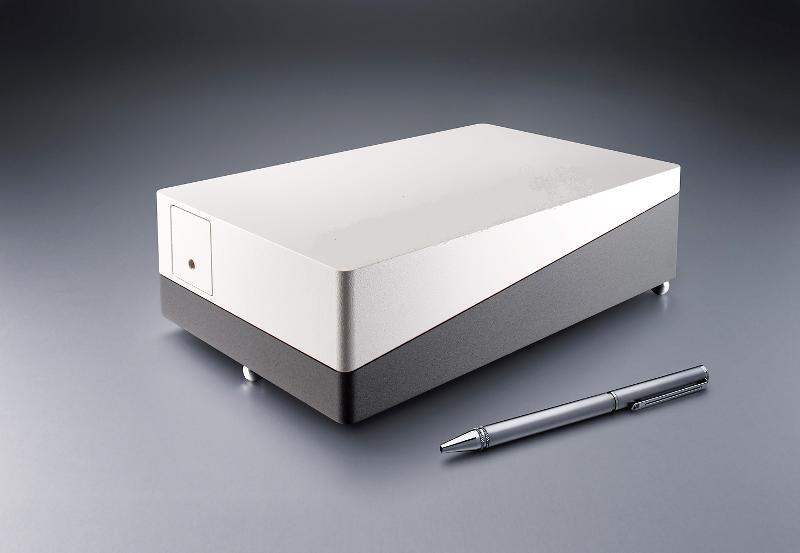 |
DPSS DMPLH lasers |
 |
New laser spectrometer
T&D-scan for research that
demands high resolution and high spectral
density in UV-VIS-NIR spectral domains - now available with
new pump option! The T&D-scan includes a CW ultra-wide-tunable narrow-line laser, high-precision wavelength meter, an electronic control unit driven through USB interface as well as a software package. Novel advanced design of the fundamental laser component implements efficient intra-cavity frequency doubling as well as provides a state-of-the-art combined ultra-wide-tunable Ti:Sapphire & Dye laser capable of covering together a super-broad spectral range between 275 and 1100 nm. Wavelength selection components as well as the position of the non-linear crystal are precisely tuned by a closed-loop control system, which incorporates highly accurate wavelength meter. Reserve a
spot in our CW lasers training
workshop in San Diego, California. Come to
learn how to build a
CW
Ti:Sapphire laser from a kit |
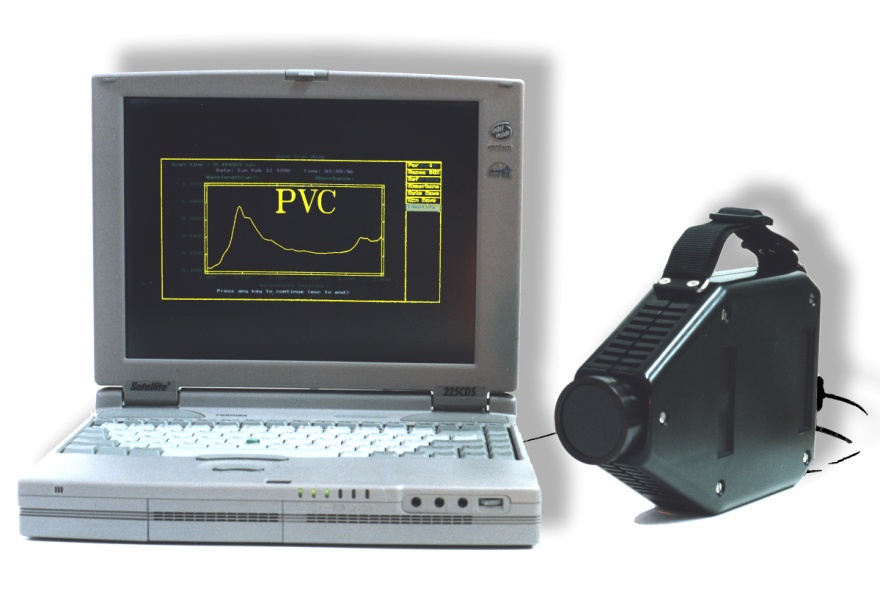 |
AOTF Infrared Spectrometer |
 |
Open Microchannel Plate Detector
MCP-MA25/2 -
now in stock! |
 |
Hummingbird EMCCD camera The digital Hummingbird EMCCD camera combines high sensitivity, speed and high resolution. It uses Texas Instruments' 1MegaPixel Frame Transfer Impactron device which provides QE up to 65%. Hummingbird comes with a standard CameraLink output. It is the smallest and most rugged 1MP EMCCD camera in the world. It is ideally suited for any low imaging application such as hyperspectral imaging, X-ray imaging, Astronomy and low light surveillance. It is small, lightweight, low power and is therefore the ideal camera for OEM and integrators. buy online |
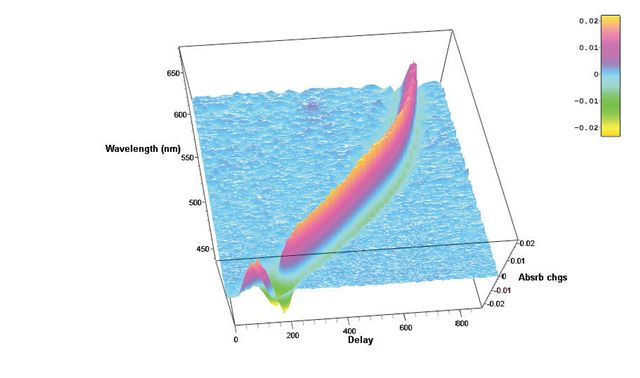 |
Hatteras-D
femtosecond transient absorption data acquisition system Future nanostructures and biological nanosystems will take advantage not only of the small dimensions of the objects but of the specific way of interaction between nano-objects. The interactions of building blocks within these nanosystems will be studied and optimized on the femtosecond time scale - says Sergey Egorov, President and CEO of Del Mar Photonics, Inc. Thus we put a lot of our efforts and resources into the development of new Ultrafast Dynamics Tools such as our Femtosecond Transient Absorption Measurements system Hatteras. Whether you want to create a new photovoltaic system that will efficiently convert photon energy in charge separation, or build a molecular complex that will dump photon energy into local heat to kill cancer cells, or create a new fluorescent probe for FRET microscopy, understanding of internal dynamics on femtosecond time scale is utterly important and requires advanced measurement techniques. Reserve a
spot in our Ultrafast Dynamics Tools
training workshop in San Diego, California. |
|
|
Beacon Femtosecond Optically Gated Fluorescence Kinetic Measurement System
-
request a quote -
pdf Reserve a
spot in our Ultrafast Dynamics Tools
training workshop in San Diego, California. |
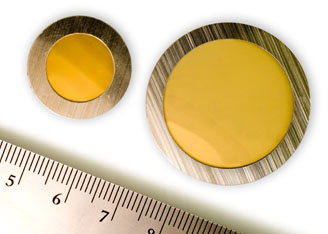 |
Terahertz systems, set ups and components New band pass and long pass THz optical filters based on porous silicon and metal mesh technologies. Band pass filters with center wavelengths from 30 THz into GHz range and transmissions up to 80% or better. Standard designs with clear aperture diameters from 12.5 to 37.5 mm. Long pass filters with standard rejection edge wavelengths from 60 THz into GHz range. Maximum transmission up to 80% or better, standard designs at 19.0 and 25.4 mm diameters. Excellent thermal (from cryogenic to 600 K) and mechanical properties THz products: THz Spectrometer kit with Antenna THz transmission setup THz time domain spectrometer Pacifica fs1060pca THz time domain spectrometer Pacifica fs780pca THz detectors: Golay cell and LiTaO3 piroelectric detectors PCA - Photoconductive Antenna as THz photomixer Pacifica THz Time Domain Spectrometer - Trestles Pacifica Holographic Fourier Transform Spectrometer for THz Region Wedge TiSapphire Multipass Amplifier System - THz pulses generation Terahertz Spectroscopic Radar Mobile System for Detection of Concealed Explosives Band pass filters with center wavelengths from 30 THz into GHz range Long pass filters with standard rejection edge wavelengths from 60 THz into GHz range Generation of THz radiation using lithium niobate Terahertz crystals (THz): ZnTe, GaP, LiNbO3 - Wedge ZnTe |
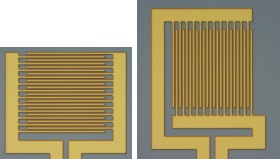 |
iPCA - interdigital Photoconductive Antenna for terahertz waves Large area broadband antenna with lens array and high emitter conversion efficiency iPCA with LT-GaAs absorber, microlens array for laser excitation wavelengths l £ 850 nm, adjusted hyperhemispherical silicon lens with a high power conversion efficiency of 0.2 mW THz power / W optical power. The iPCA can be used also as large area THz detector. The two types iPCAp and iPCAs have the same active interdigital antenna area but different contact pad directions with respect to the electrical THz field. Interdigital Photoconductive Antenna for terahertz waves generation using femtosecond Ti:Sapphire laser THz books |
 |
IntraStage lowers the cost
of test data management! Struggling with gigabytes or terabytes of test data? IntraStage easily transforms test data from disparate sources into web-based quality metrics and engineering intelligence you can use.
Contact
us today to discuss your test management requirements and specifications of your
application. |
Training Workshops
|
|
Come to San Diego next summer! Attend one of our training workshops in San Diego, California
during summer 2011 Del Mar Photonics has presented training workshops for customers and potential customers in the past 3 years. Our workshops cover scientific basics, technical details and provide generous time for hands-on training. Each workshop is a three-day seminar conducted by professional lecturer from 10am to 4pm. It includes lunch, as well as a training materials. We have also reserved two days for Q&A sessions, one-on-one system integration discussions, social networking, and San Diego sightseeing.
The following training workshops will be offered during this
summer: |
Featured Customer
|
|
Trestles LH10-fs/CW laser system at UC Santa Cruz Center of Nanoscale Optofluidics
Del
Mar Photonics offers new
Trestles fs/CW laser system which can be easily
switched from femtosecond mode to CW and back. Having both modes of operation in one system dramatically increase a
number of applications that the laser can be used for, and makes it an ideal
tool for scientific lab involved in multiple research projects. |
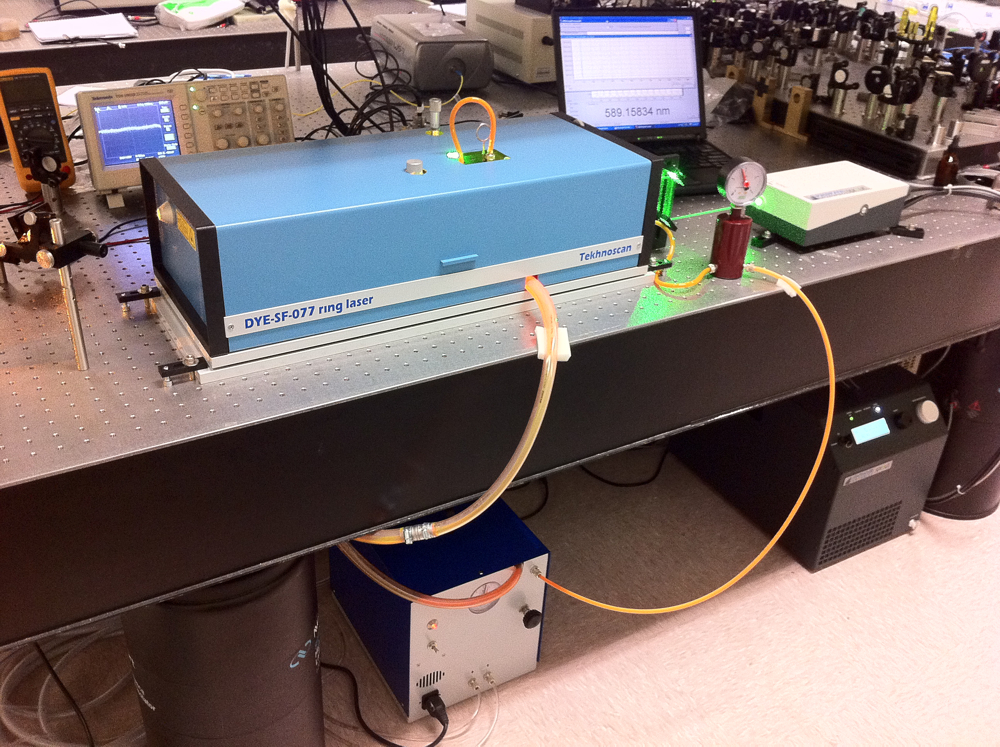 |
Frequency-stabilized CW single-frequency ring Dye laser DYE-SF-007 pumped by DPSS DMPLH laser installed in the brand new group of Dr. Dajun Wang at the The Chinese University of Hong Kong. DYE-SF-077 features exceptionally narrow generation line width, which amounts to less than 100 kHz. DYE-SF-077 sets new standard for generation line width of commercial lasers. Prior to this model, the narrowest line-width of commercial dye lasers was as broad as 500 kHz - 1 MHz. It is necessary to note that the 100-kHz line-width is achieved in DYE-SF-077 without the use of an acousto-optical modulator, which, as a rule, complicates the design and introduces additional losses. A specially designed ultra-fast PZT is used for efficient suppression of radiation frequency fluctuations in a broad frequency range. DYE-SF-077 will be used in resaerch of Ultracold polar molecules, Bose-Einstein condensate and quantum degenerate Fermi gas and High resolution spectroscopy |
Other News
Optical Society of Southern California meeting at UCSD OSSC 2011-04-27
Nd:YAG laser ordered by the University of Leon, UANL, Mexico
Wedge 50 Multipass Amplifier pumped with a Darwin-527-30-M DPSS Laser
ordered by Hong Kong customer
New
Trestles LH10-fs/CW femtosecond+CW laser ready for delivery to the
University of California Santa Cruz
Trestles femtosecond
Ti:Sapphire laser delivered to North Carolina State
University
Del Mar Photonics sponsor IONS (International OSA Network of Students)
conference IONS-NA-2 in Tucson, Arizona
IONS-NA-2
website
Best talk and best
poster awards at IONS-Moscow 2010 conference sponsored by Del Mar Photonics
Watch Del Mar Photonics
videos!
Del Mar Photonics is now on Twitter!
Del Mar Photonics featured components
Del Mar Photonics continuously expands its components portfolio.
 |
Solar
Prisms for Concentrating Photovoltaic Systems (CPV) Solar cells made of compound semiconductors such as gallium arsenide are very expensive. Usually very small cells are installed and various means such as mirrors, lenses, prisms, etc..are used to concentrate sunlight on the cells. Concentration photovoltaic technology (CPV) uses the solar radiation with an efficiency of 40%, double that of conventional solar cells Del Mar Photonics design custom Concentrating Photovoltaic Systems (CPV) and supply variety of the optical components for CPV such as solar prisms shown in the picture. |
|
|
Axicon Lens Axicon lens also known as conical lens or rotationally symmetric prism is widely used in different scientific research and application. Axicon can be used to convert a parallel laser beam into a ring, to create a non diffractive Bessel beam or to focus a parallel beam into long focus depth. Del Mar Photonics supplies axicons with cone angles range from 130° to 179.5° for use with virtually any laser radiation. We manufacture and supply axicons made from BK7 glass, fused silica and other materials. download brochure - request a quote |
 |
Rutile (TiO2) coupling
prisms Del Mar Photonics offers optical elements made of high quality synthetically grown Rutile Titanium Dioxide crystals. Rutile’s strong birefringency, wide transmission range and good mechanical properties make it suitable for fabrication of polarizing cubes, prisms and optical isolators. Boules having high optical transmission and homogeneity are grown by proprietary method. Typical boules have 10 - 15 mm in dia. and up to 25 mm length. Optical elements sizes - from 2 x 2 x 1 mm to 12.7 x 12.7 x 12.7 mm. Laser grade polish quality is available for finished elements. So far we the largest elements that we manufactured are 12 x15 x 5 mm, in which optical axis is parallel to 15 mm edge, 5 mm is along beam path, 12 x 15 mm faces polished 20/10 S/D, one wave flatness, parallelism < 3 arc.min. (better specs. available on request). more details - download brochure - request a quote |
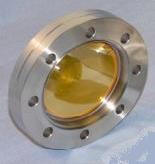 |
Vacuum viewport Del Mar Photonics offer a range of competitively priced UHV viewports , Conflat, ISO or KF including a variety of coatings to enhance performance. Del Mar Photonics viewports are manufactured using advanced techniques for control of special and critical processes, including 100 percent helium leak testing and x-ray measurements for metallization control. Windows Materials include: Fused silica, Quartz , Sapphire , MgF2, BaF2, CaF2, ZnSe, ZnS, Ge, Si, Pyrex. Standard Viewing diameters from .55" to 1.94 ". Coating - a range of custom coatings can applied - which include - Single QWOT - Broad Band AR - V coatings - ITO - DLC (Diamond like coating) more details - request a quote |

|
Hydrogen
Thyratrons are used in
such devices as radars with different power levels, high-power pulsed
technical, electrophysical, medical devices and lasers. Sophisticated
design and high quality ceramic-metal envelope determines long lifetime
and very accurate and reliable operation of hydrogen thyratrons under wide range of environmental
conditions. Applications: - radars - pulsed lasers power supplies - medical apparatus - electrophysical instrumentation Triggered Three-Electrode Spark Gap Switches are ceramic-metal sealed off gas discharge trigatron-type devices with a co-axial trigger electrode. These Gas Discharge Tubes contain no mercury and, due to an advanced design, feature high reliability and a long lifetime being operating under wide range of environmental conditions. Applications: - pulsed installation for processing materials - installations with plasma focus - pulse power supplies for lasers and other pulse equipment - medical apparatus such as lithotriptors and defibrillators - processing systems for petroleum wells |
 |
We are looking forward to hear from you and help you with your optical and crystal components requirements. Need time to think about it? Drop us a line and we'll send you beautiful Del Mar Photonics mug (or two) so you can have a tea party with your colleagues and discuss your potential needs. |
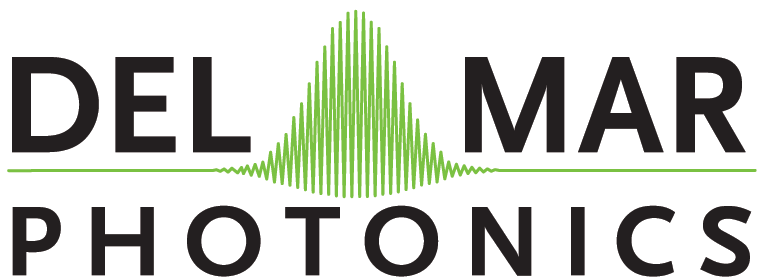
Del Mar Photonics, Inc.
4119 Twilight Ridge
San Diego, CA 92130
tel: (858) 876-3133
fax: (858) 630-2376
Skype: delmarphotonics
sales@dmphotonics.com
Optical nonlinearity and power limiting in organic molecules and
nanocomposites
Paper 8113-18 of Conference 8113
Date: Monday, 22 August 2011
Author(s): Reji Philip, Raman Research Institute (India)
We have measured the optical nonlinearity of different novel organic and
composite systems including nanocomposite polymer films of Au, Ag and Pt,
Organic ionic crystals (pyridinium and quinolinium salts), Au-alkanethiol
clusters, thiophene based polymers, and Schiff base complexes, using the
z-scan and degenerate four wave mixing techniques, employing laser pulses of
nanosecond and femtosecond durations respectively. It is found that most of
these materials are efficient optical power limiters (except a few showing
saturable absorption) under the present excitation conditions. The third
order nonlinear susceptibilities and figure of merit values for these media
have been determined.
Optical nonlinearities of triphenylamine substituted tridentate pyridyl
ruthenium complexes
Paper 8113-29 of Conference 8113
Date: Monday, 22 August 2011
Author(s): Xingzhong Yan, Ming Yan, Peifen Lu, South Dakota State Univ.
(United States); Heping Zeng, East China Normal Univ. (China)
Nonlinear refractive index n2 of new polypyridyl ruthenium complexes was
measured by using Z-scan techniques with femtosecond laser pulses. It was
found that the symmetry and coplanarity of ruthenium complex was quite
important for obtaining high nonlinear optical refractivity. Meanwhile, no
clear nonlinear absorption behavior was found for the four complexes at 800
nm, which indicated that the ruthenium complexes had a large real part of
third-order susceptibilities but a very small imaginary part. This will
highly extends their potential applications in nonlinear optical fields.
Ultrafast switching of semiconductor microcavities
Paper 8095-13 of Conference 8095
Date: Tuesday, 23 August 2011
Author(s): Georgios Ctistis, Willem L. Vos, Emre Yüce, Univ. Twente
(Netherlands); Julien Claudon, Jean-Michel Gérard, Commissariat à l'Énergie
Atomique (France)
We study frequency-resolved femtosecond pump-probe reflectivity of planar
GaAs-AlAs microcavities. In the free carrier excitation regime we observe a
not-adiabatic change of the frequency of probe light to a value different
from the cavity resonance. By judicious choice of pump and probe frequencies
with respect to the semiconductor bandgap we can determine the switching
process to be governed by the electronic Kerr effect. We studied this regime
and demonstrate that we shift the resonance by a linewidth on a timescale
governed only by the cavity storage time.
Transient absorption study on photogenerated carrier dynamics in visible
light responsive photocatalysts GaN:ZnO
Paper 8109-3 of Conference 8109
Date: Tuesday, 23 August 2011
Author(s): Akihiro Furube, National Institute of Advanced Industrial Science
and Technology (Japan); Kazuhiko Maeda, Kazunari Domen, The Univ. of Tokyo
(Japan)
Transient absorption of visible light responsive powder photocatalysts,
solid solution of GaN and ZnO (GaN:ZnO), and other related materials were
measured by using femtosecond diffuse reflectance spectroscopy. The GaN:ZnO
is known to be one of successful photocatalysts which split water into
oxygen and hydrogen molecules under visible-light irradiation. We have
elucidated that the charge trapping was within time resolution (~200 fs) and
recombination time was about 100 ps for 30% of carriers and much longer for
70%, clearly indicating that most of photogenerated carriers have long
lifetime to ensure the efficient reactivity.
Optical trapping in a microfluidic device via surface plasmon resonance
on patterned hole arrays
Paper 8097-62 of Conference 8097
Date: Thursday, 25 August 2011
Author(s): Stephen Weber, Daniel J. Day, Min Gu, Swinburne Univ. of
Technology (Australia)
The manipulation of polystyrene microspheres via the application of Surface
Plasmon Resonance (SPR) based optical effects inside patterned and
non-patterned microfluidic device was investigated. A 200x200 µm array of 4
µm holes was etched into the microfluidic devices gold surface using an
amplified femtosecond pulse. 15, 10, and 4.3 µm sized microspheres were
placed in a sample of phosphorus buffer solution and pumped into the
microfluidic chamber using a gravity pump system. We've observed that via
the patterning of the gold surface layer the trapping efficiency can be
increased compared to the unpatterned case.
Ultrafast nanoscale imaging using high order harmonic generation
Paper 8140-12 of Conference 8140
Date: Tuesday, 23 August 2011
Author(s): Hamed Merdji, Commissariat à l'Énergie Atomique (France)
Ultrafast coherent diffraction using soft and hard X-rays is actually
revolutionizing imaging science. Indeed, new ultrashort pulses recently
available hold the promise of watching matter evolving with unprecedented
space and time resolution. We have recently taken up the challenge of
ultrafast coherent imaging of nanometric objects, such as nano-particles
using our table-top soft X-ray laser harmonic source. We have very recently
demonstrated nanoscale imaging in a single shot mode reaching 70 nm spatial
resolution and 20 femtoseconds snapshot [1]. We then implemented a recently
proposed holographic technique using extended references. This technique,
easy to implement, allows a direct non iterative image reconstruction. In
the single shot regime, we demonstrated a spatial resolution of 110nm [2].
[1] A. Ravasio et al., Phys. Rev. Lett. 103, 028104 (2009). [2] D. Gauthier
et al., Phys. Rev. Lett. 105, 093901 (2010).
Course: Nanoplasmonics
Date: Thursday, 25 August 2011
Instructor(s): Mark I. Stockman, Georgia State Univ. (United States)
Nanooptics deals with optical phenomena and spectroscopy on the nanoscale,
i.e., in the regions of space whose size is much smaller than the light
wavelength. While electromagnetic waves cannot be localized in the regions
with sizes significantly less than half wavelength, nanooptics is based on
electric fields oscillating at optical frequency. From the positions of the
interaction with matter and spectroscopy, such local optical fields mostly
produce the same type of responses as electromagnetic waves. Elementary
excitations that are carriers of energy and coherence in nanooptics are
surface plasmons (SPs). These local fields cause a wealth of gigantically
enhanced optical phenomena of which the surface enhanced Raman scattering
(SERS) is the most studied and widely known. This one-day course will
encompass the fundamental properties and applications of the surface
plasmonics at the nanoscale. It will include coherent effects associated
with phase memory of the SPs, in particular, coherent control of nanooptical
phenomena. Nonlinear processes such as generation of harmonics and
two-photon excitation by nanoscale fields will also be covered. Ultrafast
(femtosecond and attosecond) phenomena are within the scope of this course.
We will also include quantum phenomena associated with properties of surface
plasmons as quantum quasiparticles such as quantum generation and
fluctuations. Along with fundamental properties of SPs, we will consider
many applications of nanoplasmonics, in particular, detection of ultrasmall
amounts of chemical and biological compounds, scanning near-field optical
microscopes or SNOMs, and nanolithography.
Optimizing the second-order nonlinear optical response in some
indoline-based chromophores at the molecular and macroscopic levels
Paper 8113-15 of Conference 8113
Date: Sunday, 21 August 2011
Author(s): Ayele Teshome, Katholieke Univ. Leuven (Belgium); Delower
Bhuiyan, Mohamed M. Ashraf, Graeme J. Gainsford, Andrew J. Kay, Industrial
Research Ltd. (New Zealand); Inge Asselberghs, Koen Clays, Katholieke Univ.
Leuven (Belgium)
The effect of extending the conjugation length, the deployment of various
substituents and configurational locking of the polyene backbone on the
second-order nonlinear optical (NLO) response of a series of indoline based
compounds has been investigated by Hyper-Rayleigh scattering (HRS). All of
the compounds were found to have high molecular hyperpolarizabilities with
values up to 1485 x 10E-30 esu. At the macroscopic level - for poled polymer
thin-films - a strong second-order NLO signal has been detected by using
relative second-harmonic generation (SHG) techniques. A femtosecond
operating system at 1300 nm fundamental wavelength was used for both the HRS
and SHG experiments. X-ray crystallographic studies were performed on three
of the compounds and bond length alternation (BLA) values obtained. These
were then related back to the observed NLO responses.
Charge transfer processes at intra- and intermolecular heterojunctions
Paper 8098-18 of Conference 8098
Date: Monday, 22 August 2011
Author(s): Enrico Da Como, Ludwig-Maximilians-Univ. München (Germany)
Photoinduced charge transfer is the primary process in photovoltaics. Here
we probe the first steps of charge separation in a series of low-bandgap
donor-acceptor copolymers by femtosecond infrared pump-probe spectroscopy.
The results are discussed considering the donor acceptor strength of the
units within the chain and how this influences the yield of polaron
generation. In the second part we will combine the pump-probe experiments
with time resolved luminescence to study charge separation at
polymer/fullerene intermolecular heterojunctions. Upon doping of the
conjugated polymer we report reduced recombination via charge transfer
excitons and enhanced polaron formation.
Adiabatic and nonadiabatic metallization of dielectric nanofilms by
strong optical fields
Paper 8096-28 of Conference 8096
Date: Tuesday, 23 August 2011
Author(s): Mark I. Stockman, Maxim Durach, Anastasia Rusina, Georgia State
Univ. (United States); Matthias F. Kling, Max-Planck-Institut für
Quantenoptik (Germany)
We consider a 1-10 nm-thin nanofilm of an insulator subjected to a strong
oscillating electric field normal to it. The frequency of this field may be
in the range from microwave to optical, depending on the film thickness (in
the near-ir to visible range for a ~1-2 nm thickness). The strength of this
field is considered to be in the range ~1-10 V/nm. A slow, adiabatic field
induces a reversible phase transition in the film to a metallic state. The
electrons can be transferred between the nanofilm's surfaces We also
demonstrate that a femtosecond pulse causes ultrafast formation of plasmonic
band in the high-frequency response of a nanostructure. This ultrashort
pulse creates a non-equilibrium excitation of the nanostructure, which can
be controlled using adiabatic phase accumulation effect. The demonstrated
possibility of ultrafast switching between insulator and plasmonic metal
phases can be employed for creation of active plasmonic elements for
ultrafast nanocircuits
Attosecond control of electrons emitted from a nanometric metal tip
Paper 8096-29 of Conference 8096
Date: Tuesday, 23 August 2011
Author(s): Peter Hommelhoff, Max-Planck-Institut für Quantenoptik (Germany)
- featured Del Mar
Photonics customer
We focus carrier-envelope phase (CEP) stable few-cycle laser pulses on a
sharp tungsten tip and measure the energy of emitted electrons. We observe
above-threshold photoemission and, with increasing laser intensity, the
onset of strong-field effects. Further, we observe a strong CEP-dependent
modulation of the spectra, which we explain by spectral interference.
Presence and absence of interference fringes are interpreted as single- or
double slits in time, with emission durations in the sub-femtosecond range.
We foresee this work enabling near-field measurements of plasmon dynamics on
the (sub-)nanometer-attosecond scale. Because of field-enhancement, a simple
laser oscillator suffices to generate the required peak electric field
strengths to reach the strong-field regime.
A spatially and temporally localized sub-laser-cycle electron source
Frequency of the 40Ca+ Optical Clock transition and evaluation of systematic
shifts
Paper 8132-8 of Conference 8132
Date: Wednesday, 24 August 2011
Author(s): Yao Huang, Qu Liu, Jian Cao, Baoquan Ou, Peiliang Liu, Hua Guan,
Xueren Huang, Kelin Gao, Wuhan Institute of Physics and Mathematics (China)
The trapping and laser cooling 40Ca+ ion on the way towards optical
frequency standards has been developed in our group. We locked a 729 nm
laser to atomic transition by four points locking method. And the center
frequency of 40Ca+ 4s2S1/2 −3d2D5/2 optical clock transition was measured by
a femtosecond comb system referenced to a H-maser. A standard Allan
deviation of less than 10-14 at 2000 s is obtained. The systematic frequency
shifts are evaluated with 729 nm laser. The total systematic uncertainty of
the clock resonance has been characterized to about 10-15.
Electrophoretic deposition of Cu-In composite nanoparticle thin films for
fabrication of CuInSe2 solar cells
Paper 8104-31 of Conference 8104
Date: Thursday, 25 August 2011
Author(s): Bing Liu, Wei Guo, Kevin Hagedorn, IMRA America, Inc. (United
States)
Thin films of Cu-In composite nanoparticles were produced by electrophoretic
deposition in colloidal suspensions. The nanoparticles were prepared with
high power femtosecond pulsed laser ablation in liquid solvents. The
nanoparticles inherit compositions from the target during laser ablation.
The success of electrophoretic deposition is explained based on
electrochemical interactions between the nanoparticles and the electrode.
CuInSe2 solar absorber layers were formed after annealing in selenium vapor
under atmospheric pressure. Effective solar cell structures have been
fabricated based on this method. The results open up a new route of
non-vacuum fabrication of thin film CIGS solar cells.
Measurement of stress and strain applied to electrochemically aligned
collagen fibres by second-harmonic generation microscopy
Paper 8113-13 of Conference 8113
Date: Sunday, 21 August 2011
Author(s): Nobutaka Goami, Keisuke Yoshiki, Takahiro Namazu, Shozo Inoue,
Univ. of Hyogo (Japan)
Collagen fibres provide mechanical strength to biological tissues. When
mechanical stress is applied, a cell enzymatically degrades and restructures
the collagen fibres to relieve the stress in the extracellular matrix around
the cell. For quantitative research of this mechanism, visualization of
stress distribution in collagen fibres is essential. We demonstrated
quantitative measurement of stress in collagen fibres by second-harmonic
generation (SHG) microscopy and a tensile test. The collagen molecule is an
ampholyte and forms bundles spontaneously under the conditions of pH 7.
Based on this behaviour, electrochemically aligned collagen fibres were
fabricated under a pH gradient generated between parallel electrodes after
application of DC voltage in the collagen solution. Both ends of the fibre
were bonded to a tensile tester consisting of one pair of translation arms,
and tensile stress was applied in the longitudinal direction of the fibre.
Simultaneously, the intensity of SHG light emitted from the collagen fibre
excited by a femtosecond pulsed laser was measured at the transmission and
reflection sides. SHG intensities on both sides increased with the strain
applied on the fibre. This result suggests that the alignment homogeneity of
the collagen molecules in the fibre was improved by the strain. On the other
hand, the transmission to reflection ratio of SHG intensity decreased with
an increase in the strain because of an increase in reflectance due to a
change in the degree of organization in the collagen fibrils. The dependence
of SHG intensity on stress and strain provides us with a non-contact probe
to visualize stress and strain distribution in the extracellular matrix in
the living body.
Vibrational response of gold nanorods: palladium coating effect
Paper 8096-148 of Conference 8096
Date: Wednesday, 24 August 2011
Author(s): M. Fernanda Cardinal, Univ. de Vigo (Spain) and International
Iberian Nanotechnology Lab. (Portugal); Jorge Pérez-Juste, Luis M.
Liz-Marzan, Univ. de Vigo (Spain); Denis Mongin, Aurelien Crut, Natalia Del
Fatti, Fabrice Vallee, Univ. Claude Bernard Lyon 1 (France)
In this work, the ensemble acoustic response of gold nanorods and core-shell
Au@Pd nanorods is investigated for increasing Pd ammounts using
time-resolved spectroscopy. Experimental results were analysed and compared
with simulations using COMSOL as finite element analysis solver. Our work
was motivated by fundamental and technological interests, understanding and
modeling of heat transfer and thermal transport at the nanoscale are
important technological issues for the design of new nanoelectronic devices,
where improper heat dissipation could detriment its functionality. Gold
nanorods (AuNR) were synthesized through the seeded growth method1 (aspect
ratio ~ 3.5). Subsequently, the AuNR were coated with palladium in an
aqueous solution containing hexadecyltrimethylammonium bromide (CTAB),
Na2PdCl4 and ascorbic acid.2 For low palladium salt concentration, the
longitudinal plasmon band slightly red shifted; whereas for intermediate and
high palladium salt concentration, the longitudinal plasmon band
blue-shifted. Characterization of the samples was performed with UV-visible
spectroscopy and transmission electron microscopy (TEM). In the spectra of
Figure 1, we observed that the intrinsic optical properties of palladium
become more evident when increasing palladium content, masking gold optical
properties. From TEM images we conclude that the final morphology of the
bimetallic nanoparticles is rod-shape. In general, the palladium shell can
be distinguished from the gold core due to their different electron densisty
(Figure 1). The ultrafast nonlinear optical response of ensemble samples was
investigated by combining a high-sensitivity femtosecond pump-probe setup
with a spatial modulation microscope.3 We used an optical parametric
amplifier to excite the nanoparticles at 400 nm and a second time-delayed
probe pulse at 700 nm. Pump-induced changes of the probe pulse transmission
were achieved by mechanical chopping of the pump beam together with a
lock-in detection of the probe beam transmission change (ΔT/T), yielding
information about the fundamental breathing and extensional modes of the
nanoparticles. In Figure 2, the measured signal is depicted for a pure AuNR
and a core-shell Au@Pd, sample (b) of Figure 1, from data fitting the
extensional and breathing modes are obtained respectively. Finally,
experimental results are in good agreement with previous literature and
theoretical results obtained from computing extensional and breathing mode
period for Au@Pd core-shell particles of different geometries with a
macroscopic model and using a finite element analysis.4,5
Charge generation dynamics at nano-scale interfaces in all-organic and
hybrid materials
Paper 8098-11 of Conference 8098
Date: Sunday, 21 August 2011
Author(s): Laura M. Herz, Univ. of Oxford (United Kingdom)
Conjugated polymers and molecules are increasingly used as cheap artificial
light-harvesting materials in photovoltaic devices. The large exciton
binding energy in these systems necessitates the use of blends comprising at
least two materials at whose interface a type-II heterojunction is formed,
thus making charge separation energetically favourable. Examples of
all-organic materials are blends of conjugated polymers with single-walled
carbon nanotubes (SWNTs) with the latter promising large electron mobilities
and percolation paths. We have investigated the charge photogeneration
dynamics at the interface formed between SWNTs and poly(3-hexylthiophene)
(P3HT) using a combination of femtosecond spectroscopic techniques [1]. We
demonstrate that photoexcitation of P3HT forming a single molecular layer
around a SWNT leads to an ultrafast ( 430 fs) charge transfer between the
materials. The addition of excess P3HT leads to long-term charge separation
in which free polarons remain separated at room temperature. Our results
suggest that SWNT-P3HT blends incorporating only small fractions (1%) of
SWNTs allow photon-to-charge conversion with efficiencies comparable to
those for conventional (60:40) P3HT−fullerene blends, provided that
small-diameter tubes are individually embedded in the P3HT matrix. In
addition, hybrid interfaces comprising organic dyes as sensitizer monolayers
on metal-oxide mesostructures films have been highly successful when
implemented in so-called dye-sensitized solar cells (DSSCs). We have used
optical-pump terahertz-probe spectroscopy to explore the photoinduced
conductivity dynamics in such mesoporous metal-oxide films [2]. We extract
early-time mobility values and compare these to bulk values in order to
determine factors limiting electron movement in these systems. In addition,
we have utilized terahertz spectroscopy to investigate the influence of
surface treatments for the metal oxide on early-time charge dynamics. For
example, surface treatment of the mesoporous TiO2 with TiCl4 has been found
to be critical to enable efficient operation of DSSCs. However, we find that
neither early-time charge mobility nor charge injection rate or decay times
are significantly affected by the treatment, which suggests that it may,
instead, have an impact on phenomena occurring on longer time scales. [1] S.
D. Stranks, C. Weisspfennig, P. Parkinson, M. B. Johnston, L. M. Herz, and
R. J. Nicholas, Nano Lett. 11, 66 (2011). [2] P. Tiwana, P. Parkinson, M. B.
Johnston, H. J. Snaith, and L. M. Herz , J. Phys. Chem. C 114, 1365-1371
(2010).